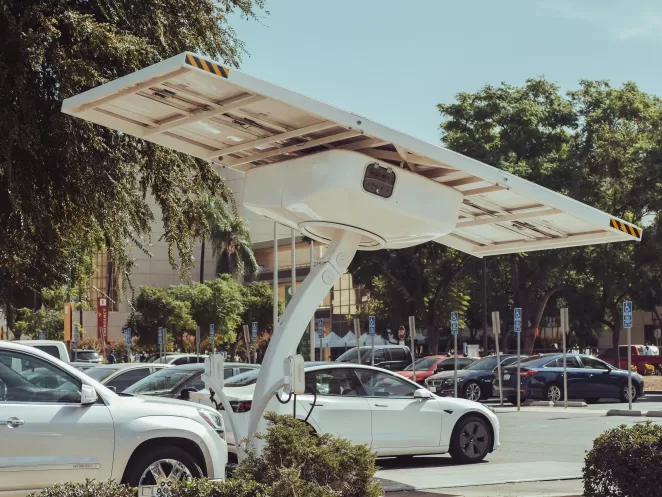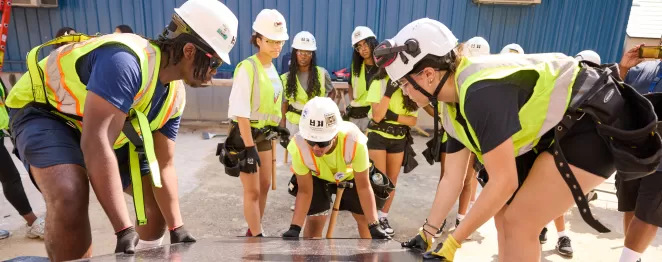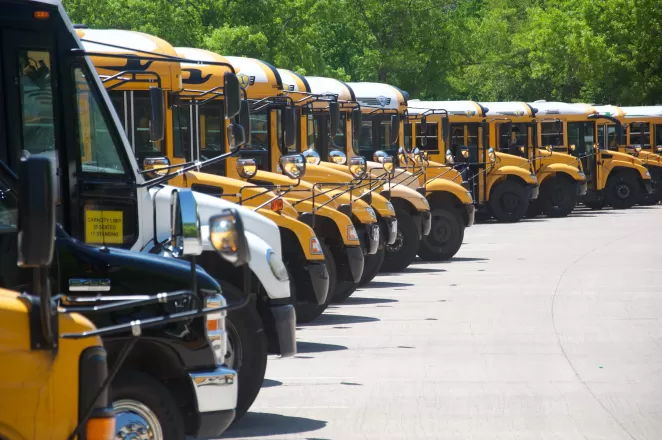Northeast Houston Redevelopment Council Strengthens Communities Affected by Climate Change

Freeways are a symbol of movement, but in some neighborhoods, they become walls holding the people down. Take Kashmere Gardens in Northeast Houston. When storms flood the area, the freeways turn into rivers, leaving the residents stranded. It’s not the only way that unjust infrastructure has harmed them.
“We are locked in by railroads,” says Keith Downey, Super Neighborhood Vice President for Kashmere Gardens and one of the founding directors for Northeast Houston Redevelopment Council. “We’re locked in by vehicular emissions. We are locked in by contamination.”
The Northeast Houston Redevelopment Council was formed after Hurricane Harvey hit the city in 2017. Devastation was widespread across Houston, but neighborhoods like Kashmere Gardens were especially affected. Half of all households in the area were totally or partially destroyed, and around a quarter of residents live below the poverty line.
Underserved, low-income, and non-white, the Northeast was slow to receive the aid that flowed to more well-known and affluent neighborhoods. Local churches, non-profits, and individuals took control and provided food, shelter, and medicine for affected residents for 30 days. This coalition grew into the council.
In 2017, Houston Mayor Sylvester Turner launched the Houston Complete Communities program, a partnership with local “Super Neighborhoods” that aims to help underserved communities get access to grants and other resources. There was some stumbling at first. Downey told The Houston Chronicle he didn’t even know what a Super Neighborhood was when he ended up council president of one. Still, he kept at it, and helped enable positive change in Kashmere Gardens.
“A Super Neighborhood is basically an organization or a forum where residents come . . . and they’re able to listen to different agencies and departments on what’s coming down the pipe,” says Downey. “They’re able to share what their concerns are.”
Downey hosts monthly meetings in the Kashmere Multi-Service Center. In 2023, the center was crowned the first resilience hub in Houston, paid for with city, federal, and grant dollars.
“We have a generator,” says Downey. “We have car charging ports. We will also have food for people. Seniors are meeting down the hall. This is a hub for them already. You always go where the people are. You expect people to always come to you. This is a place of resilience, and we have resilient communities when you go through so much and your back is against the wall.”
“Our communities are the first to feel the pain and they feel it worst and longest. That means that we don’t have a lot of time to debate whether or not this is something that we should be all in on,” says Bullard.
Engaging people in the communities is vital. The rhetoric around climate change often speaks in global, not local terms. Even as communities feel the negative effects of climate change, they may not recognize the cause.
Crossing that barrier is one of the challenges faced by Huey German Wilson, the Super Neighborhood president for Trinity Houston Gardens and the president of the Northeast Houston Redevelopment Council. She has watched her neighborhood struggle with the effects of climate change for decades.
“We are a community that has been neglected for about 40 or 50 years. And so, we’re under-resourced and underserved,” she says. “Climate change is not something that we’ve received well. We don’t understand it. And so, we’re probably 20 years behind on the terminologies, the jargon that people use around climate change. That’s been a challenge for us. Because we accept things. We’ve got an illegal dumping issue in Northeast Houston, in Trinity Houston Gardens. And we looked at that as our problem when it’s a blight problem.”
Wilson can tick off the legion of problems that exist in places like Kashmere Gardens and Trinity Gardens, and the ways that she’s helped address them. The neighborhoods are food deserts, areas where there are no grocery stores and people rely on heavily processed meals to survive. Trinity Gardens now has a regular farmer’s market where residents buy fresh fruits and vegetables.
There’s also the heat island effect. The large amount of cement and concrete absorbs the harsh Texas sun and holds onto the heat longer than other surfaces. This leads to higher temperatures, poorer air quality, and other health issues. The Northeast Houston Redevelopment Council has planted over 700 trees, which can not only lower temperatures and provide shade but also absorb some of the air pollution.
The Council’s partner in these projects has been the Bullard Center for Climate and Environmental Justice at Texas Southern University. Founded in 2021 by the titular Dr. Robert Bullard, the center provides logistic support for underserved communities by helping them navigate complicated pathways to resources.
“Climate change and global warming will widen the disparities, will widen the gap between the haves and have-nots,” says Bullard. “Our community-based organizations are located on the frontline of climate change. Our communities are the first to feel the pain and they feel it worst and longest. That means that we don’t have a lot of time to debate whether or not this is something that we should be all in on. We have to make sure that we get the resources to the communities in a timely manner.”
Since 2021, this has involved the Justice40 initiative put forward by the Biden-Harris Administration. Under executive order, the federal government has pledged 40 percent of many climate and environmental-related Federal program investments in the fight for environmental justice to go to marginalized communities such as those in Northeast Houston. The result has been a helpful flow of money that enables groups like the Northeast Houston Redevelopment Council to empower their friends and neighbors.
“It’s been exciting because Dr. Bullard [was] so instrumental in developing the plan,” says Wilson. “They were better able to see that we were in no way equipped to do what Justice40 said we could do. And these things happen all the time that these initiatives roll out and we can’t tailor it to our community because we don’t know how it affects us. We don’t know what it means to us. But in Justice 40, clearly 40 percent or about $60 billion of the $30 trillion or so dollars that are coming down have to come into black, brown, low income, under-resourced and indigenous people basically. Those are where that money has to go.”




